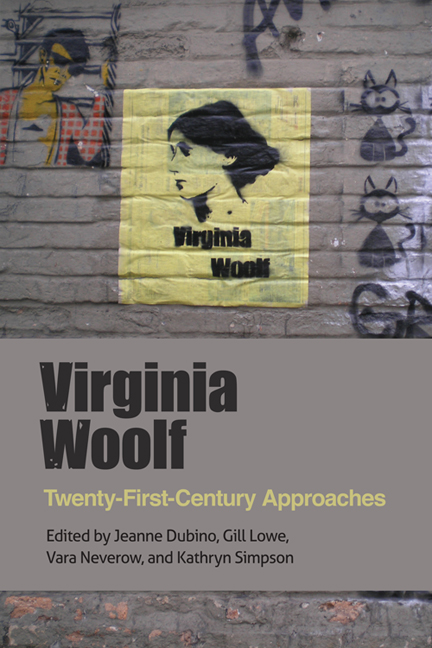Book contents
- Frontmatter
- Contents
- Acknowledgements
- Contributors
- Abbreviations
- Introduction
- PART ONE Self and Identity
- PART TWO Language and Translation
- PART THREE Culture and Commodification
- 5 ‘Unity – Dispersity’: Virginia Woolf and the Contradictory Motif of the Motor-car
- 6 ‘Am I a Jew?’: Woolf's 1930s Political and Economic Peregrinations
- PART FOUR Human, Animal, and Nonhuman
- PART FIVE Genders, Sexualities, and Multiplicities
- Index
5 - ‘Unity – Dispersity’: Virginia Woolf and the Contradictory Motif of the Motor-car
from PART THREE - Culture and Commodification
Published online by Cambridge University Press: 05 August 2016
- Frontmatter
- Contents
- Acknowledgements
- Contributors
- Abbreviations
- Introduction
- PART ONE Self and Identity
- PART TWO Language and Translation
- PART THREE Culture and Commodification
- 5 ‘Unity – Dispersity’: Virginia Woolf and the Contradictory Motif of the Motor-car
- 6 ‘Am I a Jew?’: Woolf's 1930s Political and Economic Peregrinations
- PART FOUR Human, Animal, and Nonhuman
- PART FIVE Genders, Sexualities, and Multiplicities
- Index
Summary
The motor-car has become an emblem of the disruptive forces of the ‘new’ in early-twentieth-century culture. As a ‘symbol of modernity’ (Sachs 1992: 32), it collides with bicycles and caravans, introduces bodies to the pains and pleasures of speed, and alters perspectives on time, space, and social place. However, the tension between tradition and modernity was also mediated by the automobile, particularly through luxury marques such as Lanchester, Daimler, and Rolls-Royce. The aura of class privilege surrounding these bespoke vehicles signalled the continuity of carriage and car, which advertising strategies of the day were careful to maintain, especially as middle-class consumers entered the automobile market. In an era of technological and socioeconomic change, motor-cars may speak to innovation and transformation, but they play a significant role in the reiteration of existing social structures too. These seemingly contradictory meanings and the motor-car's place in understanding modern British identity are what Virginia Woolf explores, both as an author and as an owner of three automobiles.
Woolf's representations of motor-cars speak to their varied significance in early-twentieth-century Britain and to her recognition that cars are a form of fashion. Like fashion in ‘its dual nature as system and event’ (Koppen 2009: 26), there is a slippage between the ‘system, idea or aesthetic’ and the ‘particular practices’ of individuals who use the car in distinct ways (Entwhistle 2000: 3). For example, while certain marques may reinforce established social status, as Lady Lasswade's ‘magnificent car’ does in The Years (132), they may also enable individuals to perform identities that are not necessarily theirs by birth or marriage. Thus, in Between the Acts, Ralph Manresa's ‘great silver-plated car’ is positioned as a prop that is linked to his attempt ‘to look the very spit and image of the landed gentry’ (42, 37). The different registers of meaning with which the automobile can be associated – conservative or self-consciously modern; rooted in landed identity or marking social ascension – are manifest in its different roles, whether the car arrives at the Opera House, is driven from the city to Pointz Hall, or is parked in the Woolfs’ shed at Monk's House.
- Type
- Chapter
- Information
- Virginia WoolfTwenty-First-Century Approaches, pp. 93 - 110Publisher: Edinburgh University PressPrint publication year: 2014



